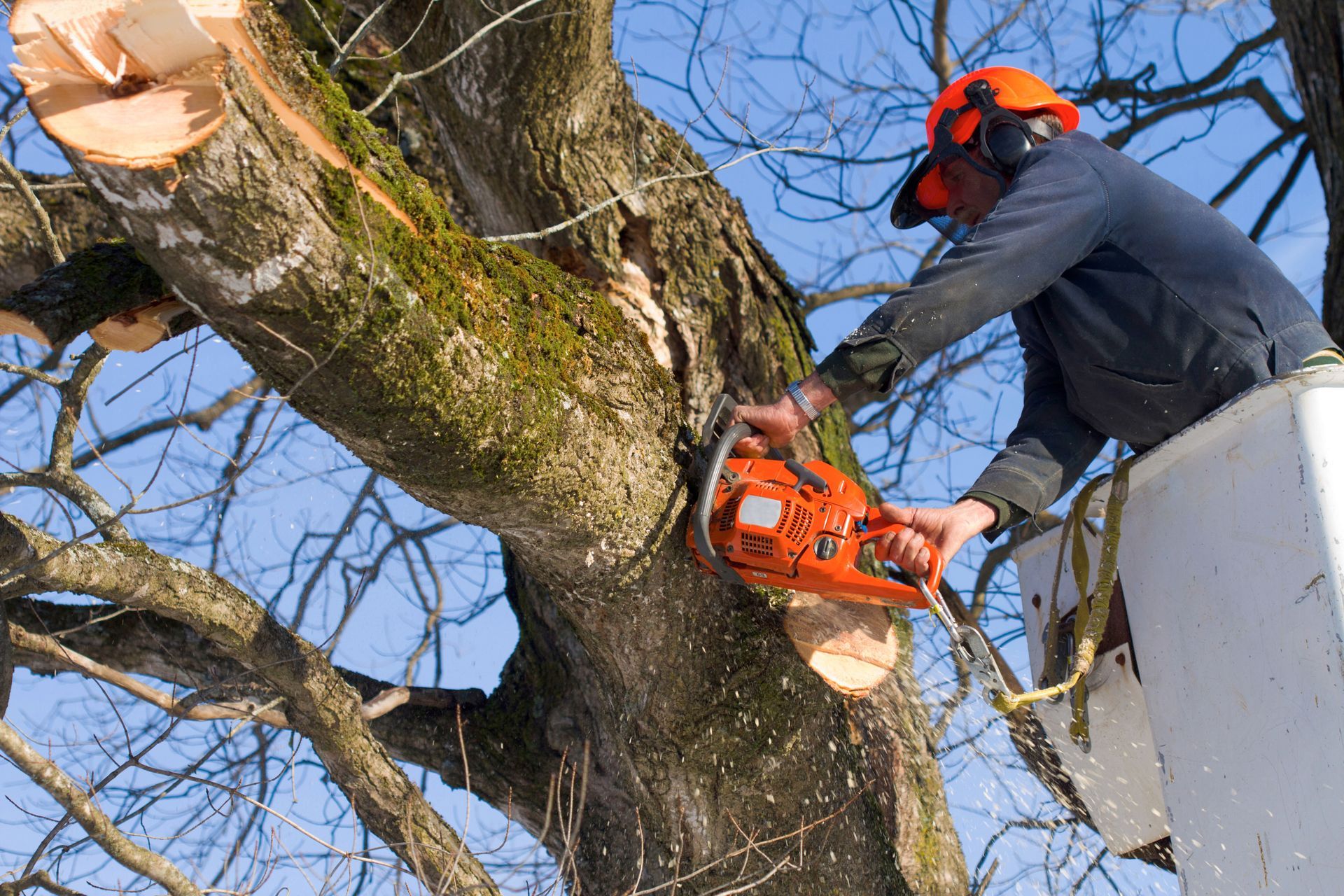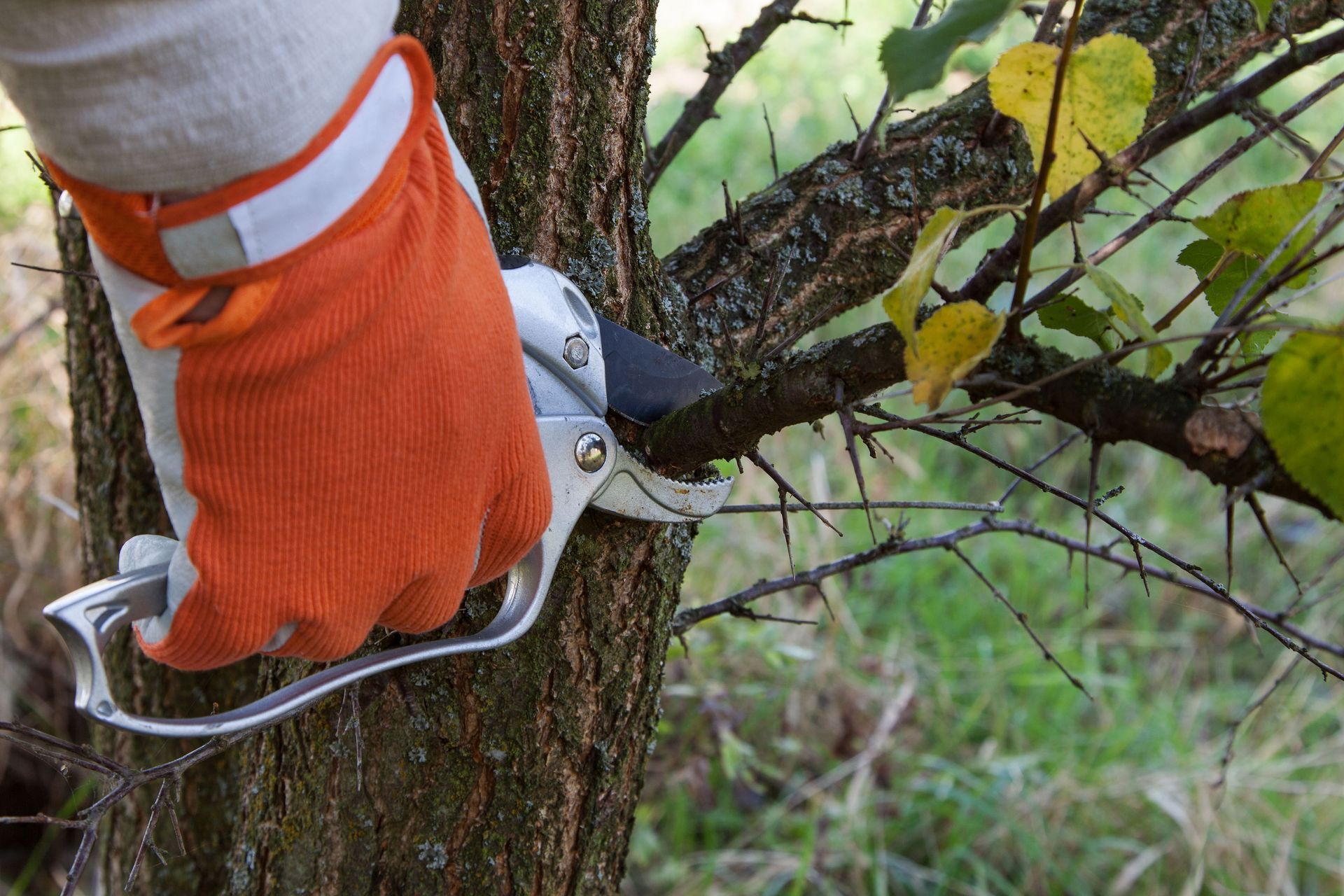Colorado Springs Tree Trimming Basics – An Arborist’s Guide
How Much of a Trim Does Your Tree Need?
Are you searching for tree trimming in Colorado Springs, to understand the best ways to trim trees?
Tree trimming is a regular part of yard maintenance for most homeowners. Trimming out dead or unhealthy limbs from a tree keeps a property safe from the hazards that come with broken branches.
Full tree trimming directs the growth of the tree while strengthening the tree’s vascular system by encouraging a more efficient flow of water and nutrients. It is important to the health of the tree that proper pruning techniques are used to cut the limbs and branches correctly.
Strategy for identifying how much of a tree should be thinned out
No more than 25% of the branches should be removed at one time, and it is important to identify the best limbs to remove, and the best ones to leave. The pruning cuts need to be done with the proper undercuts and overcuts so that the branch will fall in the intended direction and so the bark does not peel back.
Branches need to be trimmed just beyond the protective branch collar (this is the more swollen area right at the base of a branch) so that the tree can heal properly.
There are several different levels of tree trimming services that can be done depending on the needs of your tree and property.
We break it down into the following categories:
Class 1 Trim: Cleaning
A Class 1 Trim targets the removal of dead or diseased wood.
Dead limbs become very brittle and are far more likely to snap and break in a storm and fall on whatever is below them. When a part of a tree is sick, the tree also sends a higher percentage of its resources (water, nutrients, energy) to the struggling limbs.
This results in less resources circulating throughout the rest of the tree, which weakens the overall structure of the tree.
When the dead or unhealthy tree branches are cut out, the tree is more able to circulate its resources and its overall structure is strengthened. There is a decreased chance of insects and disease taking up residence in the decaying wood and a reduced risk of branches breaking and falling in a storm.
A Class 1 Trim should be done anytime there is dead wood in a tree to prevent the hazard of limbs breaking or falling. This is particularly important if limbs are close to homes, vehicles or other structures.
Class 2 Trim: Thinning
The main purpose of a Class 2 Trim is to direct the growth of the tree.
The dead or diseased wood is removed, and limbs and branches are also thinned out to promote strength and growth in the tree.
This should be done anytime a tree becomes overgrown and thick with competing branches (when the branches start growing into each other and competing for space), or when there is an increasing amount of dead wood.
There is an important balance to this type of trim. The tree needs to be thinned out enough to space out the branches to allow for air circulation and sunlight and to encourage a more efficient flow of water and nutrients, but the tree also should not be over trimmed.
The general rule of thumb is that no more than 25% of the limbs should be removed, and this should include the competing branches, but not the outer canopy.
A Class 2 Trim is typically done about every 3 to 5 years but the need for this may vary widely depending on the type of tree and the tree’s environment. This can be done at any time of year.
Class 3 Trim: Fruit Trees
Fruit trees require a little bit more care and maintenance than most other types of trees.
Fruit trees are more prone to breakage due to fruit load. Growth needs to be directed so that the branches are spaced out well and not competing for space so that the fruit load is balanced to prevent limbs breaking. Young fruit trees need to be trained early so that the fruit-bearing limbs grow out evenly.
Proper pruning of fruit trees early in the season encourages new growth which stimulates flower and fruit production through the summer and fall.
A Class 3 Trim is mainly used for pruning fruit trees. In this type of trim, every part of the tree is pruned, including the outer canopy. This encourages increased growth and fruit production and helps strengthen the tree’s branches for fruit-bearing.
The best time to prune a fruit tree is during the winter or in the early spring before the buds open up.
Trees expend a lot of energy during the growth process, and fruit trees respond better to being pruned in the wintertime. Pruning a fruit tree in the winter will strengthen the tree and prepare it to send its resources out to encourage growth and blossoming in the spring, and increased fruit production in the fall.
Young trees need to be pruned and trained regularly but the frequency of pruning is needed less frequently for more mature trees. A full-grown fruit tree typically needs to be pruned about every 3 years.
Raising a Tree
It is often beneficial to have space under the tree branches to be able to walk under or work around it.
Raising a tree is a tree trimming technique that involves removing the lowest branches of the tree to make space underneath the tree. It is helpful to the health of a yard to be able to get underneath a tree to clean debris that gets caught around it, and there is often benefit to mulching around a tree to hold in moisture.
Raising the limbs of a tree also simply adds space for activity in the yard.
In the Colorado Springs area, raising a tree is particularly common with evergreen trees and can be done using a professional tree company if you are unsure of how to raise a tree.
The thick full lower branches of the evergreen trees can take up quite a bit of space and make it nearly impossible to get under the tree to work and clean around it, and raising the branches adds a great deal of convenience to day to day yard care.
This type of trim can be beneficial for many other types of deciduous trees as well.
Selected Trimming:
As a tree grows and fills out there may be specific branches that are growing in an unwanted direction or growing into something they shouldn’t. Sometimes a storm will break a few limbs but not drop them entirely. Selective trimming involves removing specific limbs or branches before they become a problem.
In some cases selective trimming is done just to get branches out of the way, and in some cases, it is needed to prevent a property hazard.
Tree limbs that are growing toward powerlines need to be removed as early as possible because they become more dangerous to remove if they grow into the powerlines.
Tree limbs that grow over a roof may be best to remove to reduce the risk of them falling onto the roof and to reduce excess debris clogging up rain gutters.
Safety
Safety is an important factor in considering whether to trim a tree yourself or whether to hire a professional tree service company.
Smaller trees are much safer and simpler to trim because they can be trimmed from the ground, but larger trees usually require climbing to trim which can be dangerous without the proper equipment, training, and experience. A professional tree trimmer will use climbing techniques and safety equipment such as a rope, harness, and lanyard to secure himself into the tree.
He will also use proper cutting techniques to make sure that the limb being trimmed can be lowered safely and in the intended direction. If you are unsure whether or not you can remove branches safely, consider calling a tree trimming service in your area for a free estimate.
If you are in the Colorado Springs area, call Precision Tree for proper and professional tree service. We have 19 years of experience and we know Colorado trees.




Share On: